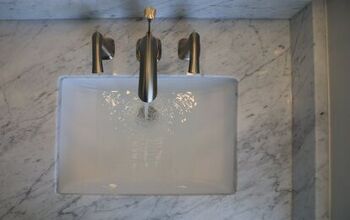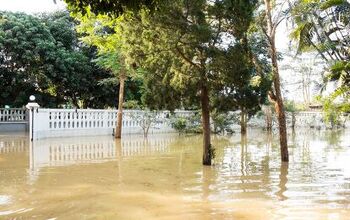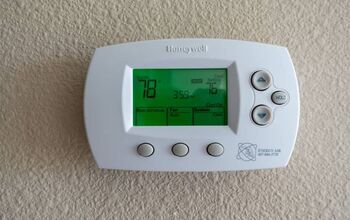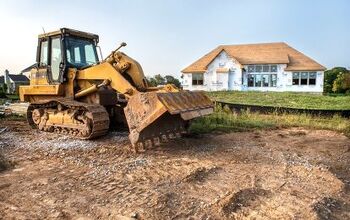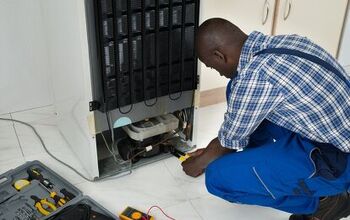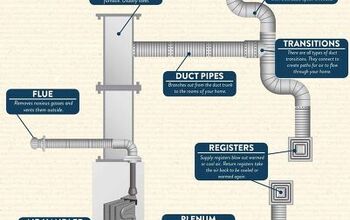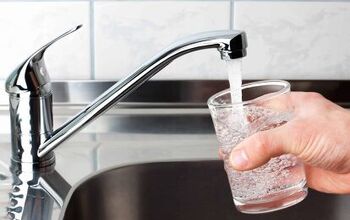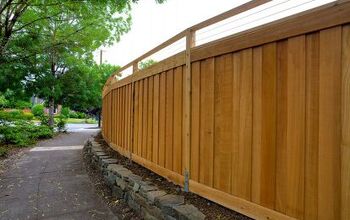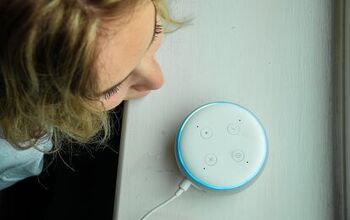Toilet Flapper Closes Too Soon? (We Have Ways to Fix It)

Toilet flush systems often end up with issues that need immediate repairs. You do not want your nature’s call to be messy due to a broken toilet, now do you? One such problem that has been frequently witnessed by people is an inefficient toilet flapper that closes too soon. As a result, the necessary amount of water does not flush down the toilet bowl to clean it.
If your toilet flapper closes too soon, check the slack, adjust the float, and check the condition of the toilet’s flapper. If that doesn’t work, check if the drainage hole is clogged or remove the foam float. Finally, if all else fails, check the water level in your tank.
To fix it, let’s discuss all the possible solutions that you can try out to fix your toilet flapper issue. Test all these methods to check the one that solves your problem. This way, you’ll have a toilet that’s working like new, so you don’t have any issues.
Related Content: How To Remove A Hard Plastic Toilet Flapper | Toilet Flapper Types | Toilet Swirls But Won’t Flush | Toilet Chain Keeps Coming Off?
Do You Need to Install or Repair a Toilet?
Get free, zero-commitment quotes from pro contractors near you.

Methods For Fixing Your Toilet Flapper Issues
1. Check The Slack
The slack is the looseness in the chain between the trip lever, flush lever, or flushing handle and the flapper. This slack needs to be just enough to keep the flapper open when flushing the toilet. Too much slack will not open the flapper properly, and little slack will keep the flapper open for too long.
In both cases, the slack can be a huge problem. To deal with it, ensure that the chain has a quarter to half an inch of slack only. This is so that when you flush the toilet, the handle will pull the chain, allowing the fresh water in to flush the toilet.
2. Adjust The Float
The float is a buoyant cork in the toilet tank that triggers the valve and prevents the overflow of filling water in the tank after flushing. It can also be in the shape of a big ball or a floating cup, depending upon the type of flush you have. However, all floaters in the flush system are height adjustable. If the floater height is low, your tank might not be filling up enough water, which results in the flapper closing too soon.
If the flapper closes too soon, usually the waste isn’t disposed of in a successful manner. If it feels like your water pressure is low when flushing, this issue may be the culprit. Not sure how to adjust to the float, then click below to see how it’s done.
3. Check The Condition Of The Flapper
The flapper in your toilet tank might not be working correctly. Toilet flappers have an air bubble inside them. When the trip lever pulls the flapper to flush the water down, the air bubble makes the flapper buoyant enough to stay open. Once the water runs down the drain, it siphons the air bubble with the flapper through the drainage hole. That triggers the flapper to close. If there is no air bubble in the flapper, it does not maintain its buoyancy to remain open. Thus, it closes too soon.
In such a case, you need to replace the flapper with a new one. Make sure to find the right flapper (2 inches or 3 inches) size to install in the tank and see if that solves the issue. You can also try changing your old flapper with a water-level-adjustable flapper, like Korky Ultra 2X high-performance flapper, which gives you more freedom at maintaining the level and flow of the water exiting the drainage hole.
4. Clear The Drainage Hole If Clogged
Sometimes, the drainage hole or pipe is clogged with calcium deposits or other mineral-based debris in the water. That causes the water in the flush tank to empty slowly upon flushing.
As a result, it feels like the flapper closes too soon because there isn’t enough water flushing down the toilet bowl. To fix this, shut down the water supply, remove the flapper, and empty the toilet tank.
After that, use a long rod or similar tool to poke in the drainage hole to clear the obstructed path. Pour down a bottle of lime in the hole and let it sit overnight. Connect the flapper in the morning, open the water supply, and let the tank fill up again. Flush to see if it solves your problem.
5. Remove The Foam Float
Some flapper designs have a flexible foam float attached to the chain. Toilets provide you with a half-flush option due to these floats. In some cases, the half flush causes the flapper to close too soon.
A full flush, which keeps the flapper open, holds the flush handle down for a longer time instead of just pressing it for a second or two. Another way to deal with it is by removing the foam float from the chain, which will give you a full flush every time, thus solving your problem.
6. Check The Float
If the toilet flapper works fine, the problem could be in the float. In some cases, the float ends up waterlogged. Floats have air in them to help them stay buoyant in the toilet tank.
If the float fills up with water, it loses its buoyancy due to a crack or hole. Thus, it is not able to keep the trip lever valve open for long. That causes the flush lever to release the tension in the chain connected to the flapper, which closes too soon.
In such a case, you can either get a new flapper with foam float or do a DIY by attaching a piece of Styrofoam (maybe ¾” thick) to the existing float. That will make it buoyant again to keep the flapper open for longer.
7. Hook The Chain In The Right Lever Hole
The flush lever has several holes positioned a little apart from each other—the end of the flapper chain hooks to one of these holes to maintain the slack.
If the chain does not connect to the right opening, it can lead to inaccurate slack. Find the suitable hole on the lever for maintaining proper slack to keep the toilet flapper open for enough time.
8. Check The Water Level Height In the Tank
The wrong tank water height can affect the working of a toilet flapper. The water needs to be at or ¼ inch under the overflow water level.
You can find a marking on the overflow pipe that shows you the water’s ideal height in the tank. Adjust the water to the recommended level and see if that fixes the flapper problem.
If none of the above methods work, call upon a professional plumber to help you solve the issue. Make sure to have a modern toilet flush system installed in your water closet, as they are more efficient and flexible at handling the water supply.
Related Questions
How do I make my toilet flapper stay open longer?
Before your handle is halfway down, the flapper should rise. If not, you will need to adjust the tension if the chain is too loose. You can do this by unhooking the chain from the handle and then shorten it a bit. After doing this, try and flush the toilet. If your flapper rises vertically and stays put, then you were successful in your venture.
Do I need a float on my toilet flapper?
Are there different size flappers for toilets?
Do You Need to Install or Repair a Toilet?
Get free, zero-commitment quotes from pro contractors near you.

Our Takeaway
It’s frustrating to find that you have an issue with your toilet, especially during an emergent bathroom trip. However, what seems like a big problem at the time may only be a small issue with your toilet’s flapper. By checking that the float is appropriately adjusted, clearing the drain float, and adjusting your chain, your toilet should work better than ever in no time.
Suppose you find that after adjusting and checking the flapper that your toilet is having issues, you can always try some Draino. If Draino doesn’t work to fix any potential clogs, it may be time to call a professional. That way, they can correctly assess the situation and diagnose the problem.
Consulting a professional doesn’t necessarily mean that you need to hire them. You can get the diagnosis to figure out what the problem is. Afterward, you can purchase the materials yourself and do the work on your own. This will save you hundreds, if not thousands of dollars. But first, start with your toilet flapper!
Related Guides

We are a team of passionate homeowners, home improvement pros, and DIY enthusiasts who enjoy sharing home improvement, housekeeping, decorating, and more with other homeowners! Whether you're looking for a step-by-step guide on fixing an appliance or the cost of installing a fence, we've here to help.
More by Upgraded Home Team



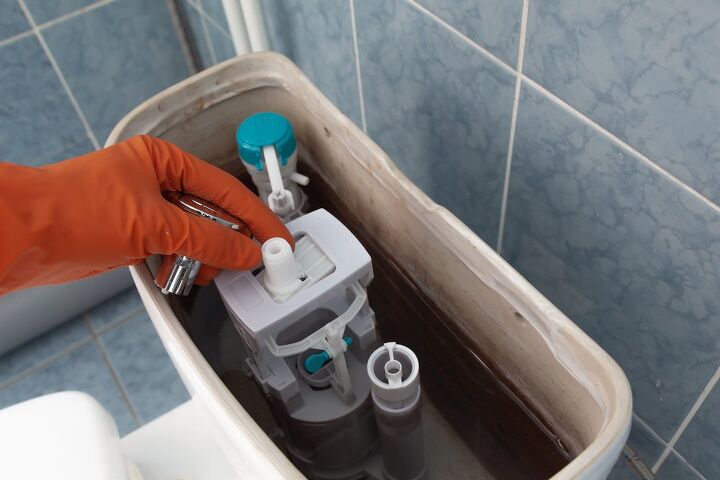






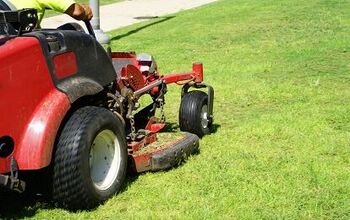
![The 5 Best Angle Grinders – [2022 Reviews & Buyer's Guide]](https://cdn-fastly.upgradedhome.com/media/2023/07/31/9071326/the-5-best-angle-grinders-2022-reviews-buyer-s-guide.jpg?size=350x220)

